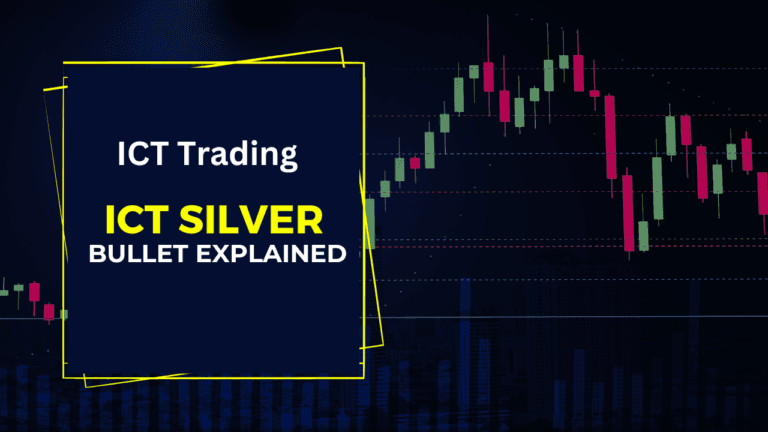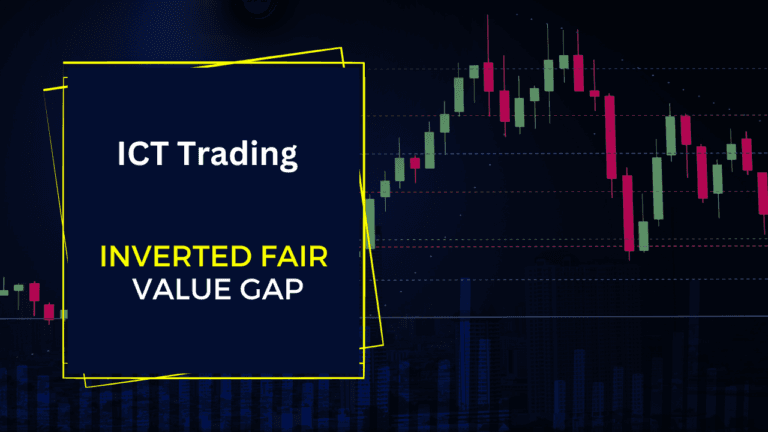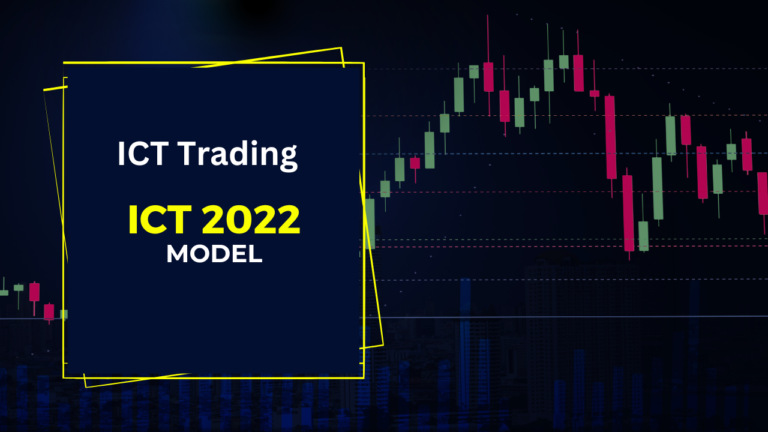MMSM ICT-Meaning in Inner Circle Trading

Navigating the trading landscape can be challenging, particularly with the array of strategies and terminology available. One term that frequently arises in trading discussions is MMSM ICT (Inner Circle Trading). This article seeks to clarify the meaning of MMSM within the context of ICT and explore its significance for traders. By breaking down the essential components of MMSM, we aim to equip both novice and experienced traders with the knowledge they need to enhance their trading strategies.
Introduction
In the world of trading, strategies and terminologies can often feel overwhelming, especially for newcomers. Among these terms, MMSM ICT (Inner Circle Trading) stands out as a significant concept. This article aims to demystify MMSM and provide a clear understanding of its role within ICT. We will explore what MMSM means, its application in trading strategies, and how traders can effectively implement it to improve their trading outcomes. Whether you’re a seasoned trader or just starting out, grasping the meaning of MMSM ICT will empower you to make more informed trading decisions.
Understanding ICT
Inner Circle Trading (ICT) is a trading methodology that emphasizes the importance of market structure, price action, and the psychological aspects of trading. Developed by trader Michael J. Huddleston, ICT offers a framework that helps traders identify potential market movements through a deeper understanding of how price interacts with key levels.
At its core, ICT focuses on the following key principles:
Market Structure
Understanding market structure is crucial in ICT. It refers to the organization of price movements within the market. Traders analyze higher highs, higher lows, lower highs, and lower lows to determine the overall trend. By identifying the market structure, traders can make more accurate predictions about future price movements.
Price Action
Price action is another fundamental aspect of ICT. It involves studying historical price movements to forecast future trends. Instead of relying solely on indicators, traders focus on the raw price data. This allows them to make decisions based on real-time market behavior, enhancing their ability to enter and exit trades effectively.
Psychological Factors
Psychology plays a pivotal role in trading success. ICT emphasizes the importance of understanding market psychology—how traders’ emotions and behaviors influence price movements. By recognizing common psychological patterns, traders can develop strategies that account for these behaviors, leading to better decision-making.
Advantages of ICT
- Comprehensive Framework: ICT provides a structured approach to trading, making it easier for traders to develop their strategies.
- Focus on Price Movement: By prioritizing price action, traders can adapt to changing market conditions without being overly reliant on indicators.
- Understanding Market Psychology: Recognizing psychological factors helps traders avoid common pitfalls caused by emotional decision-making.
In summary, Inner Circle Trading (ICT) is a robust trading methodology that combines market structure, price action, and psychology to help traders navigate the complexities of the financial markets. By understanding these principles, traders can enhance their decision-making processes and ultimately improve their trading results.
What Does MMSM Stand For?
The acronym MMSM stands for Market Maker Sell Model. In the context of Inner Circle Trading (ICT), it refers to a specific approach used by traders to understand the mechanics of price movements influenced by market makers. Market makers are entities that provide liquidity to the market by facilitating trades and maintaining an orderly market. They play a crucial role in determining price levels, and their actions can significantly impact the overall market behavior.
Components of MMSM
Understanding MMSM involves recognizing several key components:
- Market Maker Behavior: Market makers often manipulate price levels to induce buying or selling pressure. By understanding their tactics, traders can anticipate potential price movements.
- Price Levels: MMSM focuses on key price levels where market makers may enter or exit positions. Recognizing these levels helps traders identify potential turning points in the market.
- Order Flow: The analysis of order flow is vital in MMSM. Traders assess the buying and selling volume at specific price points to gauge market sentiment and determine whether to follow the market makers’ lead.
MMSM in Inner Circle Trading
In the realm of Inner Circle Trading (ICT), MMSM plays a pivotal role in understanding market dynamics. The Market Maker Sell Model provides insights into how market makers influence price movements and how traders can align their strategies accordingly. Here’s how MMSM integrates with ICT:
Identifying Market Manipulation
One of the primary uses of MMSM in ICT is identifying potential market manipulation by market makers. Traders learn to recognize patterns and behaviors that signal when market makers are attempting to drive prices in a specific direction. By being aware of these tactics, traders can position themselves strategically to capitalize on potential price reversals.
Enhancing Entry and Exit Strategies
MMSM also aids traders in refining their entry and exit strategies. By understanding where market makers are likely to act, traders can identify optimal points for entering trades and setting stop-loss or take-profit levels. This knowledge increases the chances of executing successful trades while minimizing risk.
Building a Trading Plan
Integrating MMSM into a comprehensive trading plan allows traders to formulate a more informed approach. By considering the actions of market makers alongside market structure and price action, traders can develop strategies that align with the underlying market dynamics. This holistic approach enhances the overall effectiveness of the ICT framework.
Conclusion
In summary, MMSM is a valuable component of Inner Circle Trading that provides traders with insights into the behavior of market makers. By understanding what MMSM stands for and its application within ICT, traders can improve their market analysis, enhance their trading strategies, and ultimately achieve better trading outcomes.
How to Use MMSM in Your Trading Strategy
Incorporating MMSM (Market Maker Sell Model) into your trading strategy can significantly enhance your decision-making process and improve your overall trading performance. Here are some practical steps on how to effectively utilize MMSM in your trading:
Analyze Market Maker Behavior
Understanding the actions of market makers is essential when using MMSM. Here’s how to do it:
- Study Price Movements: Pay attention to sudden price changes or spikes. These often indicate market maker activity, as they aim to fill large orders without causing significant price disruption.
- Observe Volume Patterns: Analyze volume spikes that coincide with price movements. Increased volume at key price levels can suggest that market makers are stepping in, offering clues about potential reversals or continuations.
Identify Key Price Levels
Key price levels are critical for executing successful trades. To effectively use MMSM, focus on:
- Support and Resistance Levels: These are areas where price tends to bounce back or reverse. Identify these levels on your charts to pinpoint where market makers may enter or exit positions.
- Order Blocks: Look for order blocks, which are significant price areas where large orders have previously been placed. These can serve as indicators of future price movements.
Develop Entry and Exit Strategies
Using the insights from MMSM, you can craft precise entry and exit strategies:
- Entry Points: Consider entering trades when the price approaches identified support or resistance levels, especially if accompanied by signs of market maker activity.
- Exit Points: Set exit targets based on previous price action around key levels. If the price approaches a strong resistance level, for instance, it might be wise to take profits or adjust stop-loss orders.
Monitor Market Conditions
The trading environment can change rapidly. Regularly monitor market conditions to adapt your MMSM strategies accordingly:
- Economic News: Keep an eye on economic events that can influence market volatility. High-impact news releases can alter market maker behavior and affect your trading plan.
- Technical Indicators: Use complementary technical indicators, such as moving averages or relative strength index (RSI), to confirm signals derived from MMSM analysis.
Common Mistakes to Avoid
While incorporating MMSM into your trading strategy can be beneficial, certain common mistakes can undermine your success. Here are pitfalls to watch out for:
Over-Reliance on Market Maker Signals
One of the most significant mistakes traders make is over-relying on MMSM signals without considering other market factors. While understanding market maker behavior is valuable, it’s crucial to combine it with comprehensive market analysis. Ensure you are also looking at price action, market structure, and other indicators to make informed decisions.
Ignoring Risk Management
Failing to implement sound risk management practices can lead to significant losses. When using MMSM, always establish:
- Stop-Loss Orders: Set clear stop-loss levels based on your risk tolerance to protect your capital from unexpected market moves.
- Position Sizing: Use proper position sizing techniques to ensure that no single trade can adversely affect your overall account.
Lack of Consistency
Consistency is key in trading. Many traders struggle with sticking to their MMSM strategies, often switching tactics based on short-term results. To avoid this mistake:
- Develop a Trading Plan: Create a detailed trading plan that incorporates MMSM principles and stick to it. This plan should outline your strategies, entry and exit criteria, and risk management rules.
- Review and Adjust: Periodically review your trades and assess the effectiveness of your MMSM approach. Make adjustments as necessary, but do so with caution to avoid constant changes.
Neglecting Continuous Learning
The trading landscape is continually evolving. Neglecting to stay updated on market trends, strategies, and changes in market maker behavior can leave you at a disadvantage. To counter this:
- Engage in Education: Participate in trading webinars, read relevant literature, and join trading communities to enhance your knowledge of MMSM and ICT.
- Practice: Utilize demo accounts to practice your MMSM strategies without risking real capital. This can help you refine your skills and build confidence.
Case Studies and Real-World Examples
Understanding how MMSM (Market Maker Sell Model) operates within Inner Circle Trading (ICT) is best illustrated through real-world case studies. Here are a few examples that highlight how traders effectively utilized MMSM in their strategies:
Forex Trading Scenario
In the Forex market, a trader noticed a significant spike in trading volume around a key resistance level for the EUR/USD pair. By analyzing price movements, the trader identified that market makers were likely attempting to push the price down to fill sell orders.
- Action Taken: The trader decided to enter a short position just below the resistance level, setting a stop-loss order slightly above the resistance to manage risk. As anticipated, the price retraced, allowing the trader to exit the position at a profit when it reached a nearby support level.
- Outcome: This successful trade demonstrated how understanding MMSM enabled the trader to align their strategy with market maker behavior, resulting in a profitable outcome.
Stock Market Example
In the stock market, a trader monitored a specific stock that had previously shown strong support at $50. As the price approached this level, the trader observed an increase in order flow and bullish price action.
- Action Taken: Recognizing that market makers were likely buying to push the price back up, the trader entered a long position at $50, placing a stop-loss order at $48. The trader also set a take-profit level at $55, where previous resistance had been established.
- Outcome: The stock rebounded as expected, reaching the take-profit level within a week. By leveraging MMSM, the trader was able to capitalize on market maker activity, showcasing the effectiveness of combining technical analysis with an understanding of market dynamics.
Cryptocurrency Trading
In the rapidly evolving cryptocurrency market, a trader observed the behavior of market makers during a high-volatility event. When Bitcoin’s price fell sharply, the trader noticed a significant increase in volume at the $40,000 support level.
- Action Taken: The trader recognized that this volume spike indicated market makers were likely accumulating positions. Acting on this insight, the trader bought Bitcoin at $40,000 and set a stop-loss at $39,500. They targeted a selling point at $45,000, which aligned with previous resistance levels.
- Outcome: The price stabilized and eventually rallied to $45,000, allowing the trader to realize a substantial profit. This case underscores how MMSM can guide traders in volatile markets by identifying where market makers may influence price recovery.
Conclusion
In conclusion, MMSM (Market Maker Sell Model) is a powerful tool within the Inner Circle Trading (ICT) framework that provides traders with valuable insights into market dynamics. By understanding market maker behavior, identifying key price levels, and developing strategic entry and exit points, traders can enhance their decision-making processes and improve their overall trading performance.
However, successful implementation of MMSM requires a comprehensive approach that includes sound risk management, continuous learning, and consistency in trading strategies. By avoiding common mistakes and applying the principles discussed, traders can effectively utilize MMSM to navigate the complexities of the financial markets.
Embracing the knowledge gained from case studies and real-world examples can further solidify your understanding of MMSM and its application in practical trading scenarios. As you continue your trading journey, remember to remain adaptable, continually educate yourself, and refine your strategies to achieve success in the dynamic world of trading.
Read More MMSM ICT – Transforming Digital Solutions
Frequently Asked Questions
What is MMSM in trading?
MMSM, or Market Maker Sell Model, is a concept within the Inner Circle Trading (ICT) framework that focuses on understanding the behavior of market makers. It helps traders identify key price levels where market makers may enter or exit positions, allowing for more informed trading decisions.
How does MMSM differ from other trading strategies?
Unlike traditional trading strategies that may rely heavily on indicators or historical data, MMSM emphasizes the analysis of market maker behavior and order flow. This approach helps traders anticipate potential market movements by understanding the motivations behind price changes.
What are common mistakes to avoid when using MMSM?
Common mistakes include over-relying on market maker signals without considering other market factors, neglecting risk management, lack of consistency in trading strategies, and failing to stay updated on market conditions.
How can I improve my understanding of MMSM and ICT?
Improving your understanding of MMSM and ICT involves engaging in continuous learning. Participate in trading webinars, read relevant literature, join trading communities, and practice your strategies using demo accounts to gain experience without risking real capital.
Can beginners use MMSM in their trading?
Yes, beginners can use MMSM in their trading, but it’s essential to first understand the basics of market structure and price action. Starting with demo accounts to practice and gain familiarity with the concept can be beneficial before applying it to live trading.





